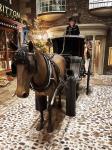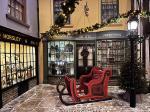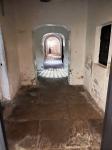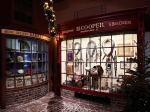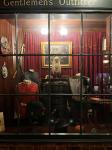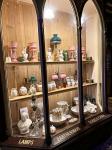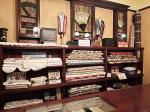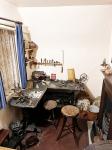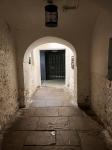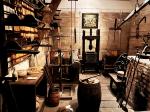Friday 5th January 2024 CM
Today was a cultural visit to our nearest city of York. I wanted to visit the Castle museum and in particular the Victorian street of Kirkgate whilst it was still decorated for the Christmas period, and secondly to visit York Minster to see the Christmas Tree Festival which actually finishes today.
I have visit Castle museum several times each year but have never managed to visit it over the Christmas period until today.
The building where the museum is housed in is steeped in history being built on the site of York Castle, adjacent to Clifford’s Tower and the Law Courts. Today the museum is housed in what was the prison buildings, which were built on the site of the Castle in the 18th century, the debtor’s prison built in 1701 using the stone from the ruins of the castle and the female prison which was built in 1780. The space now occupied by Kirkgate was actually the exercise yard for the female prisoners and open to the elements, it would have been a cold and draughty place.
It was the North Yorkshire physician and amateur archaeologist Dr John Lamplugh Kirk, who established the museum in the old Female Prison in 1938 after it had been bought by the York Corporation in 1934. He had been advertising for sites to house his vast array of artifacts relating to social history and after some modification the museum was established. A major attraction of this new museum was the recreation of a late Victorian street, named 'Kirkgate’ after Dr Kirk its founder, which at the time was the first of its kind in this country.
It was just after 11.00am when we arrived at the museum, after checking in in the entrance hall we made our way up the sloping ramp and into the Victorian Street of ‘Kirkgate’. It was dark when we arrived, the lighting and smell creating a very atmospheric setting, it felt as though you were in that Victorian time zone. All the object around us, from the lampposts to the horse troughs are from the Victorian period. Kirkgate is made up of buildings from the 16th and 17th century, the oldest being Bartons sweet shop, although originally it was a butcher’s shop. There is so much to see and capture the eye, the draper’s shop, the toy shop, pharmacy to name just a few all based on real shops that existed in York between 1870 and 1901. This was a time when York was already a tourist destination, known for its railway works and confectionery factories. It was a place of luxury shopping, but also a place of extreme poverty.
Around the back of Kirkgate is Rowntree Snicket, which houses the Poor Dwelling and the candlemaker’s and undertakers. Unpleasant and dangerous businesses existed side-by-side. It was quite a reality check imagining what life must have been like, large families, none of the amenities which we take for granted these days, central heating, electric, running water and toilet/washing facilities etc.
Reluctantly leaving Kirkgate we headed upstairs and passed several of the period rooms all decorated for Christmas. It was hard to imagine but our grandparents would have grown up through the Victorian era and would have lived in rooms like these. We passed a very interesting section ‘The day the world changed forever’ with particular reference to life and events around the First World War, which was certainly worth another visit just to absorb the amount of information on display. Heading back downstairs we headed outside across the exercise yard to the Sixties exhibition, most of which I can remember quite vividly!
On leaving the Sixties we entered the ‘Debtors Prison’, There have been prisons on this site for over seven hundred years. We were in the oldest of the surviving prison buildings, which opened in 1705. It was called the Debtors’ Prison because it was the first purpose-built prison for debtors in the country. Before 1869, people could be imprisoned for commercial debt – they weren’t considered criminals, but if they got into debt and couldn’t pay it back, their creditor could apply for them to be held here. They were held until either they – or a kind friend – paid off their debt, or until they had served their time. Although creditors were free to forgive debts, this was very rare. Being in this part of the prison made you realise how harsh the conditions must have been.
The building was also used to imprison people who were awaiting trial, people who had been convicted of a crime, and sometimes prisoners of war. One of the most notable was that of the notorious highway man Dick Turpin, who spent his last night in the cells before his execution in April 1739. Other famous inmates also include Elizabeth Boardingham, who was the last woman in Yorkshire to be burnt at the stake. In 1776 Boardingham and her lover Thomas Aikney killed her husband, John Boardingham, and the pair where both sentenced to death for the murder; Aikney by hanging and Boardingham executed by burning at the stake. It did feel quite strange walking into and around the cells knowing some of the inmates who had been housed there some 300 years earlier than my visit. I have to say that I am looking forward to my next visit.
|

